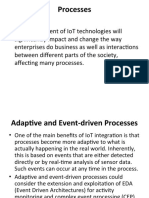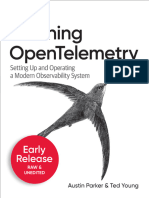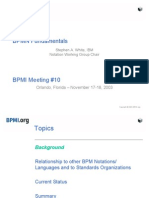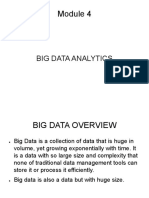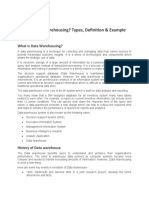OpenESB Monitoring Framework
Overview
Document version: 1.4
01 June 2017
Please send feedback to contact@pymma.com
�ABOUT PYMMA CONSULTING
Pymma Consulting is a technical architect bureau. Pymma provides expertise in the conception
governmental establishment for many years, Pymma got a unique skill in the integration and
service marketplace. Proactive in the open source landscape, Pymma support and sponsor
open source projects such as OpenESB, Drools, and Gravitee.io. Pymma was founded in 1999
and is a European company based in the UK (London), Netherland, France and Canada.
(contact@pymma.com or www.pymma.com)
About the Author
Page |2
�Contents
What is OpenESB monitoring framework? ....................................................................................................... 4
Why an OpenESB monitoring framework? ....................................................................................................... 4
OpenESB monitoring framework installation ................................................................................................... 5
BPEL Events ........................................................................................................................................................... 5
Business messages ............................................................................................................................................. 6
Event publisher ..................................................................................................................................................... 7
Business message publisher............................................................................................................................ 7
External Process........................................................................................................................................................ 8
External process features .................................................................................................................................. 8
OpenESB monitoring framework scalability..................................................................................................... 8
Publishers implementation .................................................................................................................................... 9
Event publisher ..................................................................................................................................................... 9
Business message publisher............................................................................................................................ 9
External process implementations .................................................................................................................... 10
External process implementation 01 ............................................................................................................ 10
External process implementation 02 ........................................................................................................... 10
External process implementation 03 .............................................................................................................11
License and fees .......................................................................................................................................................11
Page |3
�Introduction to the OpenESB monitoring framework
You can use OpenESB monitoring framework to extract, at the runtime, technical and business
information from the OpenESB BPEL and publish them to create reports, generate alerts or
event to monitor your processes and your business.
What is OpenESB monitoring framework?
At a higher level, an organization which wants to monitor its processes needs to extract two
types of information
The first type is the technical information on how the processes technically run. It is used to
evaluate the service availability, response time, quality of service, SLA. It could also be used to
.
The second type gives information on the business itself. It is a kind of snapshots of the
process whose content is defined at the design time and provides information for business
analytics processes. It replies t es
The OpenESB monitoring framework replies to these questions and provides two types of
.
Why an OpenESB monitoring framework?
Currently, OpenESB standalone edition (v3.1) inherited a monitoring system from the OpenESB
legacy editions. This monitoring relies on a complex mapping process that stores the BPEL
Java object in a database. Unfortunately, this process requires so many resources that very few
users could use it. In a current configuration, when the legacy monitoring is on, BPEL response
times can be increased by up to 10 times. Moreover, BPEL events and business messages can
only be stored in a local relational database. It excludes the new persistence systems such as
the NoSQL databases or the cloud data lakes.
The difficulty to get metrics from the running processes cuts the links between the business
teams and the IT process implementations and due to the lack of feedback, stops the business
processes improvement and often generates a loss of income to the companies.
The OpenESB monitoring framework has been designed and developed to solve these issues.
It is a light and scalable framework that does not deeply affect the BPEL performances. Events
and business messages sending is not limited to the relational databases but targets the latest
big data tools such as Kafka, Geode and offer and access to the data lakes on the could.
Pymma relied on the following picture to design, develop and implement the OpenESB
monitoring framework.
Page |4
�Our main idea was to create a virtual circle with the following steps:
• Business team: Defines the business processes and the metrics that will be used to
evaluate the conformance of the process behaviour with the requirements.
• IT team: Implements the business processes and the messages that will be used to
generate the metrics.
• Business process: Generates events and business messages
• Analytic process: Collects and improves events and business messages
• Report and dashboard: Provides metrics for the business team
OpenESB monitoring framework installation
To install the OpenESB monitoring framework, you must deploy on OpenESB, the last version
BPEL processes already deployed on OpenESB to access to the BPEL Events.
Business message definition is concurrent with the process implementation and does not
impact it. To publish business messages, you need to add message mappings to the BPEL
projects and then redeploy them.
No other component is required to run the OpenESB monitoring framework.
BPEL Events
Three types of Events are defined, the BPEL event, the Activity event, and the Variable event.
Page |5
�Events contains raw information such as
• What is the event?
• When it happens
• Where it occurs
It is up to the analytic process to use this raw data and extract useful information for the users.
Using BPEL event does not impact the business process design, and no additional
development is required.
Business messages
A business message is a makeup of variable embedded in the process context. At the design
time, The OpenESB user defines concurrently to the BPEL development, the element they want
to extract from the BPEL context and compose a new structure often defined by the business
teams.
In a process, many business messages can be implemented and published concurrently.
Generating business message does not impact the process development.
Page |6
�Event publisher
Once the event is issued, it is sent to an external analytic process not embedded in OpenESB.
The OpenESB architecture based on multi-instances deployment proved its capability to daily
process billions of messages on production. Since OpenESB resources are dedicated to run
and manage the business process, the external processes that will manage events and
business messages must be delegated to an external system that releases OpenESB from this
overload.
The event publishers are multithreaded and optimized to provide the best performances with
few resources. Regarding the protocol used, they publish from hundreds to thousands of
messages per second.
Business message publisher
The business message publisher has mainly the same features than the event publisher.
Nevertheless, its design is often a bit more complex than the event publisher since it deals with
messages without a predefined structure.
The business message publishers are multithreaded and optimized to provide the best
performances with few resources. Regarding the protocol used, they publish from hundreds to
thousands of messages per second.
Page |7
�External Process
The external process must not with the same resources the OpenESB. It could be designed,
developed and deployed by the users or by Pymma on-demand. It could be any software such
as alerts management, event processing, data lake, statistic or analytic tools, etc.
Consequently, the publisher acts as an external process client. Also, It transforms and adapts
the event and the business messages to match the message format expected by the external
system. It must not be used to execute a part of the external process and then affects BPEL
performances.
External process features
The external process must fulfil some critical requirements. It must be an asynchronous system
with a high capability of ingestion since OpenESB monitoring framework relies on a fire and
forget policy and does not wait for any acknowledgment from the External process to release
its resources.
Some configurations working with multiple OpenESB instances generate up to billions of
messages on a daily basis. It is up to the user to calibrate the capability of ingestion of the
external process and keep safe and secure the messages published by OpenESB.
OpenESB monitoring framework scalability
The OpenESB monitoring framework has a powerful horizontal scalability. So, it matches the
new architecture based on virtualization and cloud. Messages generated by the framework are
stateless and atomic and allow many OpenESB instances to push messages to the same
external system.
For better performances, the external module must scale horizontally as well.
Page |8
�Publishers implementation
Event publisher
The list of event publishers is not exhaustive.
• File event publisher
• MongoDB event publisher
• Elasticsearch event publisher
• Apache Geode event
• Apache Kafka event publisher
• RDB event publisher
• Google Big Query event publisher
On-demand, Pymma develops event publisher for its customer
Business message publisher
This list of business message publishers is not exhaustive.
• File business message publisher
• MongoDB business message publisher
• Elasticsearch business message publisher
• RDB business message publisher
• Google Big Query business message publisher
On-demand, Pymma develops event publisher for its customer
Page |9
�External process implementations
It is up to the OpenESB user to design and implement an external process that fulfills its
requirements. As an example, we detail three cases that could be chosen as external process
design implementation.
External process implementation 01
This implementation is dedicated to the configuration with a limited number of messages.
OpenESB publishers put the events, and the business messages in a database which acts as a
buffer and a container of data and the BI tools query the database to generate reports and
dashboards.
If the configuration is simple and easy to deploy, but the OpenESB user must consider that the
events and the business messages are recorded in a raw format and require a complex query
to provide the right data for reports and dashboards. Database ingestion capability could be a
point of contention since relational databases demonstrate low performance in high rate
ingestion.
External process implementation 02
Cloud application performances can be used to generate reports and dashboard.
OpenESB publishers send the event and business messages to a cloud database. Then, online
BI editors access the database to generate reports and dashboard. In this implementation, we
rely on the cloud power to provide a powerful ingestion and execute complex requests. The
cloud streaming databases such as Google big query are more suitable for this type of
processes than the classical relational databases often dedicated to transaction and
consistency.
P a g e | 10
�External process implementation 03
This implementation is made up of three elements:
• A buffer: Kafka receives the messages from OpenESB in an asynchronous mode
• An engine: Storm processes the raw events and messages and generates usable
records
• A persistence system: MongoDB stores the record generated by the engine and made
them available for any analytic tool
This implementation is powerful and scale horizontally and matches the most demanding
configurations, but it requires a large knowledge to be deployed and maintained.
License and fees
Use of the OpenESB monitoring framework is subject to annual support subscription that gives
you the right to use it in your configuration. The cost depends on the project, the number of
instances and many other parameters. Please Feel free to contact us for any further information
on this subscription.
P a g e | 11
































